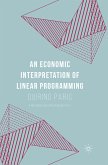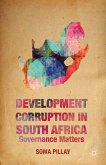Modes of Explanation (eBook, PDF)
Affordances for Action and Prediction
Redaktion: Lissack, M.; Graber, A.
73,95 €
73,95 €
inkl. MwSt.
Sofort per Download lieferbar

37 °P sammeln
73,95 €
Als Download kaufen

73,95 €
inkl. MwSt.
Sofort per Download lieferbar

37 °P sammeln
Jetzt verschenken
Alle Infos zum eBook verschenken
73,95 €
inkl. MwSt.
Sofort per Download lieferbar
Alle Infos zum eBook verschenken

37 °P sammeln
Modes of Explanation (eBook, PDF)
Affordances for Action and Prediction
Redaktion: Lissack, M.; Graber, A.
- Format: PDF
- Merkliste
- Auf die Merkliste
- Bewerten Bewerten
- Teilen
- Produkt teilen
- Produkterinnerung
- Produkterinnerung

Bitte loggen Sie sich zunächst in Ihr Kundenkonto ein oder registrieren Sie sich bei
bücher.de, um das eBook-Abo tolino select nutzen zu können.
Hier können Sie sich einloggen
Hier können Sie sich einloggen
Sie sind bereits eingeloggt. Klicken Sie auf 2. tolino select Abo, um fortzufahren.

Bitte loggen Sie sich zunächst in Ihr Kundenkonto ein oder registrieren Sie sich bei bücher.de, um das eBook-Abo tolino select nutzen zu können.
Modes of Explanation is the first book in decades to attempt to bring these conflicting approaches together and to offer a compelling narrative to explore how the paradox of 'explanation' can converge.
- Geräte: PC
- ohne Kopierschutz
- eBook Hilfe
- Größe: 2.02MB
Andere Kunden interessierten sich auch für
![Adam Smith and the Philosophy of Law and Economics (eBook, PDF) Adam Smith and the Philosophy of Law and Economics (eBook, PDF)]() Adam Smith and the Philosophy of Law and Economics (eBook, PDF)73,95 €
Adam Smith and the Philosophy of Law and Economics (eBook, PDF)73,95 €![Complexity and Innovation in Organizations (eBook, PDF) Complexity and Innovation in Organizations (eBook, PDF)]() Jose FonsecaComplexity and Innovation in Organizations (eBook, PDF)71,95 €
Jose FonsecaComplexity and Innovation in Organizations (eBook, PDF)71,95 €![The Evolution of Economic and Innovation Systems (eBook, PDF) The Evolution of Economic and Innovation Systems (eBook, PDF)]() The Evolution of Economic and Innovation Systems (eBook, PDF)113,95 €
The Evolution of Economic and Innovation Systems (eBook, PDF)113,95 €![The Poverty of Economics (eBook, PDF) The Poverty of Economics (eBook, PDF)]() Manuel Sanchis I MarcoThe Poverty of Economics (eBook, PDF)89,95 €
Manuel Sanchis I MarcoThe Poverty of Economics (eBook, PDF)89,95 €![An Economic Interpretation of Linear Programming (eBook, PDF) An Economic Interpretation of Linear Programming (eBook, PDF)]() Quirino ParisAn Economic Interpretation of Linear Programming (eBook, PDF)73,95 €
Quirino ParisAn Economic Interpretation of Linear Programming (eBook, PDF)73,95 €![Development Corruption in South Africa (eBook, PDF) Development Corruption in South Africa (eBook, PDF)]() Soma PillayDevelopment Corruption in South Africa (eBook, PDF)73,95 €
Soma PillayDevelopment Corruption in South Africa (eBook, PDF)73,95 €![The Evolution of the Property Relation (eBook, PDF) The Evolution of the Property Relation (eBook, PDF)]() A. DavisThe Evolution of the Property Relation (eBook, PDF)73,95 €
A. DavisThe Evolution of the Property Relation (eBook, PDF)73,95 €-
-
-
Modes of Explanation is the first book in decades to attempt to bring these conflicting approaches together and to offer a compelling narrative to explore how the paradox of 'explanation' can converge.
Dieser Download kann aus rechtlichen Gründen nur mit Rechnungsadresse in A, B, BG, CY, CZ, D, DK, EW, E, FIN, F, GR, HR, H, IRL, I, LT, L, LR, M, NL, PL, P, R, S, SLO, SK ausgeliefert werden.
Produktdetails
- Produktdetails
- Verlag: Palgrave Macmillan US
- Seitenzahl: 302
- Erscheinungstermin: 16. Dezember 2014
- Englisch
- ISBN-13: 9781137403865
- Artikelnr.: 44906267
- Verlag: Palgrave Macmillan US
- Seitenzahl: 302
- Erscheinungstermin: 16. Dezember 2014
- Englisch
- ISBN-13: 9781137403865
- Artikelnr.: 44906267
- Herstellerkennzeichnung Die Herstellerinformationen sind derzeit nicht verfügbar.
Peter Achinstein, Johns Hopkins University, USA Timothy Allen, University of Wisconsin-Madison, USA Jan Faye, University of Copenhagen, Denmark Alicia Juarrero, Prince George's Community College, USA Kevin Kelly, Carnegie Mellon University, USA Zachary Kopplin, Rice University, USA Lee McIntyre, Boston University, USA Sandra Mitchell, University of Pittsburgh, USA Rukmini Bhaya Nair, Indian Institute of Technology, Delhi, India Nancy Nersessian, Georgia Institute of Technology, USA Stanley Salthe, City University of New York, USA Beckett Sterner, University of Michigan, USA Paul Thagard, University of Waterloo, Canada Steven Wallis, Capella University, USA Jonathan Waskan, University of Illinois at Urbana-Champaign, USA William Wimsatt, University of Chicago, USA Konstantin Genin, Carnegie Mellon University, USA Ian Harmon, Rice University, USA Andrew Higgins, University of Illinois at Urbana-Champaign, USA Gregori Kanatzidis, University of Wisconsin-Madison, USA Nathan Miller, University of Wisconsin-Madison, USA Samantha Paulsen, Rice University, USA Joseph Spino, University of Illinois at Urbana-Champaign, USA Edmond Ramly, University of Wisconsin-Madison, USA
PART I: CONTEXT 1. Introduction; Michael Lissack, Abraham Graber 2. A Place in History; Alicia Juarrero 3. The Context of Our Query; Michael Lissack PART II: CASE STUDY 4. Case Study: Creationism; Zack Kopplin PART III: EXAMINING THE CASE 5. Scientific Realism on Historical Science and Creationism; Abraham Graber 6. A Pragmatic Constructivist Take on the Case; Michael Lissack PART IV: DIALOGUE 7. Robustness and Explanation; William Wimsatt 8. A Mode of 'Epi-Thinking' Leads to the Exploration of Vagueness and Finality; Stanley Salthe 9. Occam's Razor, the Complexity of Truth, and the Simplicity Puzzle; Kevin Kelly, Konstantin Genin 10. Getting a Grip; Nancy Nersessian 11. Modes of Explanation; Sandra Mitchell 12. Narrative as a Mode of Explanation; Rukmini Nair 13. Economic Explanations; Paul Thagard 14. Narratives and Models in Complex Systems; Timothy Allen, Edmond Ramly, Samantha Paulsen, Gregori Kanatzidis, Nathan Miller 15. Evaluating Explanations through their Conceptual Structures; Steven Wallis 16. Investigating the Lay and Scientific Norms for Using "Explanation"; Jonathan Waskan, Ian Harmon, Andrew Higgins, Joseph Spino PART V: CONCLUSION 17. Conclusion; Michael Lissack, Abraham Graber PART VI: AFTERWORD Afterword 1. The Scientific Attitude Toward Explanation; Lee McIntyre Afterword 2. Explanation Revisited; Jan Faye Afterword 3. Is The World Completely Intelligible?; Peter Achinstein Afterword 4. Explanation and Pluralism; Beckett Sterner Reprise; Michael Lissack
PART I: CONTEXT 1. Introduction; Michael Lissack, Abraham Graber 2. A Place in History; Alicia Juarrero 3. The Context of Our Query; Michael Lissack PART II: CASE STUDY 4. Case Study: Creationism; Zack Kopplin PART III: EXAMINING THE CASE 5. Scientific Realism on Historical Science and Creationism; Abraham Graber 6. A Pragmatic Constructivist Take on the Case; Michael Lissack PART IV: DIALOGUE 7. Robustness and Explanation; William Wimsatt 8. A Mode of 'Epi-Thinking' Leads to the Exploration of Vagueness and Finality; Stanley Salthe 9. Occam's Razor, the Complexity of Truth, and the Simplicity Puzzle; Kevin Kelly, Konstantin Genin 10. Getting a Grip; Nancy Nersessian 11. Modes of Explanation; Sandra Mitchell 12. Narrative as a Mode of Explanation; Rukmini Nair 13. Economic Explanations; Paul Thagard 14. Narratives and Models in Complex Systems; Timothy Allen, Edmond Ramly, Samantha Paulsen, Gregori Kanatzidis, Nathan Miller 15. Evaluating Explanations through their Conceptual Structures; Steven Wallis 16. Investigating the Lay and Scientific Norms for Using "Explanation"; Jonathan Waskan, Ian Harmon, Andrew Higgins, Joseph Spino PART V: CONCLUSION 17. Conclusion; Michael Lissack, Abraham Graber PART VI: AFTERWORD Afterword 1. The Scientific Attitude Toward Explanation; Lee McIntyre Afterword 2. Explanation Revisited; Jan Faye Afterword 3. Is The World Completely Intelligible?; Peter Achinstein Afterword 4. Explanation and Pluralism; Beckett Sterner Reprise; Michael Lissack







